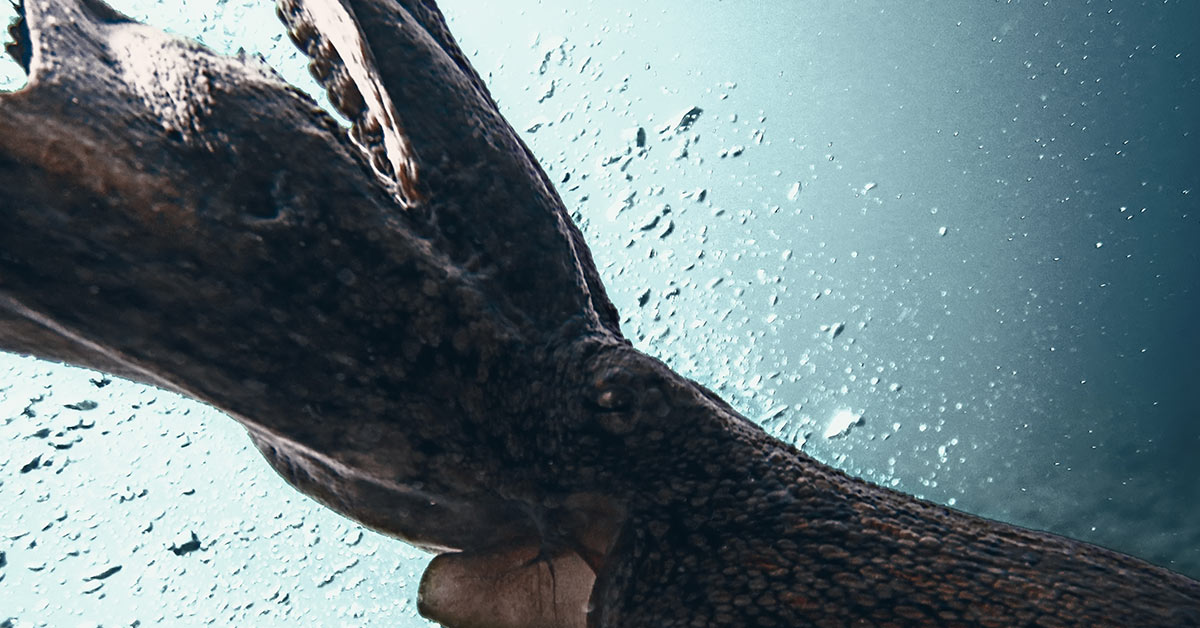Giant Squid are so elusive, you may almost assume that they aren’t even real. In 2012, however, a group of Japanese scientists recorded an incredible video of one. Last June, researchers also finally recorded one in American waters.
First Recording from 2006
Most of what marine biologists know of giant squids come from the large carcasses that float to the water’s surface and are brought in by fishermen. (1)
Researchers were able to record a giant squid in 2006, however, when they hung bait underneath a research vessel in the Ogasawara Islands. They succeeded in hooking the squid and pulling it out of the water long enough to catch it on camera, so people could finally see a video of the elusive animal. (1)
Japanese Scientists Catch Giant Squid on Camera
In 2012, a group of scientists from The National Science Museum of Japan found one. With the help of colleagues from public broadcaster NHK and the Discovery Channel, they were able to film a giant squid in its natural habitat for the first time ever. (1)
Even at that time, scientists were certain there are millions more just like that one in oceans all over the world. (1)
Giant Squid in America
In June of 2019, the first-ever footage of a giant squid was recorded in American waters. Scientists from the NOAA Office of Ocean Exploration and Research expedition were finally able to record the mysterious deep-sea creature. (2)
The Facts on Giant Squids
Giant Squids live 1,300 to 3,000 feet deep in the Ocean. Because of this, they are very hard to find, so we know very little about them. (3)
We don’t know how big they can grow, how long they can live, how they migrate, how they mate, where they lay eggs, or even what they sound like if they make any sounds at all.
What we do know is what they look like and approximate size and strength. (2)
Read: YouTuber Almost Dies After Cementing His Head Inside A Microwave
Appearance
Just like other members of their animal family, giant squid have (3):
- Two eyes
- A beak
- Eight arms
- Two feeding tentacles
- One funnel/siphon
Each of their eight arms is speckled with two-inch wide-toothed suckers, and their feeding tentacles are tipped with hundreds of sharp-toothed suckers. Their feeding tentacles are extremely long, usually, double the length of the rest of the squid. Using these tentacles, they can grab prey that is up to 10 meters (33 feet) away. (3)
In the center of the arms, they have a sharp beak used to cut their prey into more manageable pieces. They process their food even further using a tongue-like organ called the radula that sits inside the beak and is also covered with rows of teeth. (3)
They have the largest eyes in all of the animal kingdom: Each one is one foot (30 centimeters) in diameter. These eyes help them to see in the lightless depths of the ocean. They have a small, donut-shaped brain through which their esophagus runs. (3)
Their body, or mantle, holds the rest of their organs. Underneath they have a funnel where they breathe, pump water and other fluids, get rid of waste, squirt ink, lay eggs, and use jet-propulsion to move. (3)
Size
While just how big they are isn’t known, the longest mantle recorded is 7.4 feet (2.25 meters), and the longest total length recorded is 43 feet (13 meters). This was a particularly large one, however, and most carcasses that have been found rarely exceed 16 feet (5 meters) from the tip of the head to the end of the arms. (3)
A new measuring method makes scientists believe that the giant squid could reach up to 66 feet (20 meters) long in total. This has never actually been recorded. (3)
Predators
Naturally, due to their size, they have few predators. Their most notable one is the sperm whale, however, the whale never gets dinner without a battle, and it doesn’t always win the fight. (3)
Where to See Giant Squid
As mentioned already, marine biologists struggle to find these sly creatures, so you will never see them in the wild unless you are a giant squid researcher. Even then, you may not see one! You can see them on display at the Smithsonian in Washington, D.C. (3)
One thing is for sure, nature, particularly deep-sea life, is as mind-blowing as it is mysterious.
Keep Reading: Man Built A Full-Size Replica Of Noah’s Ark
Sources
- “Watch a diver swim right next to a 12-foot giant squid in Japan.” Business Insider. June 24, 2019.
- “One particularly good story was written in “The Natural History of Norway” in 1755, which described the giant squid as being as large as “a number of small islands,” and when the giant squid began to sink, it caused whirlpools that sucked everyone down with it..” Business Insider. James Pasley. October 19, 2019.
- ” Giant Squid.” Ocean. Dr. Clyde Roper.

